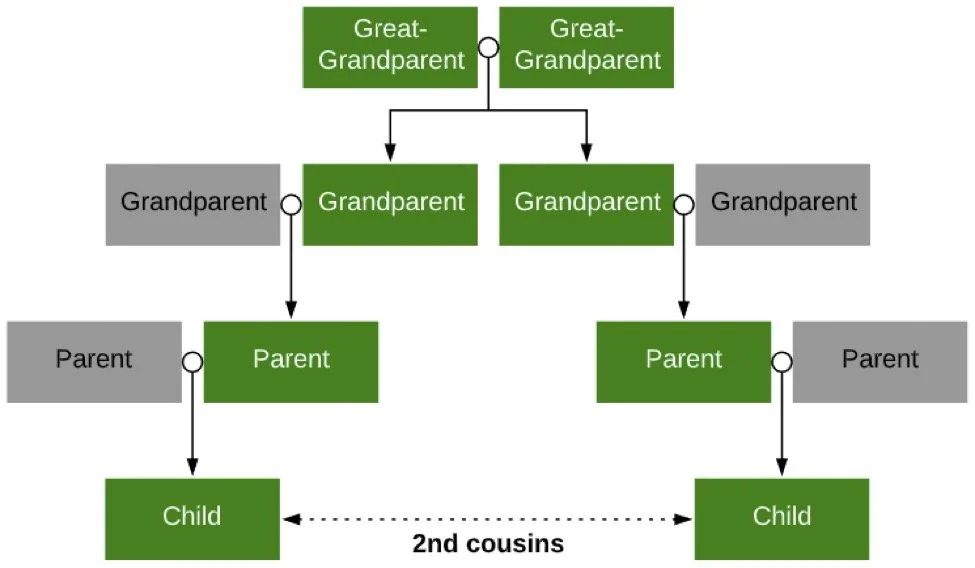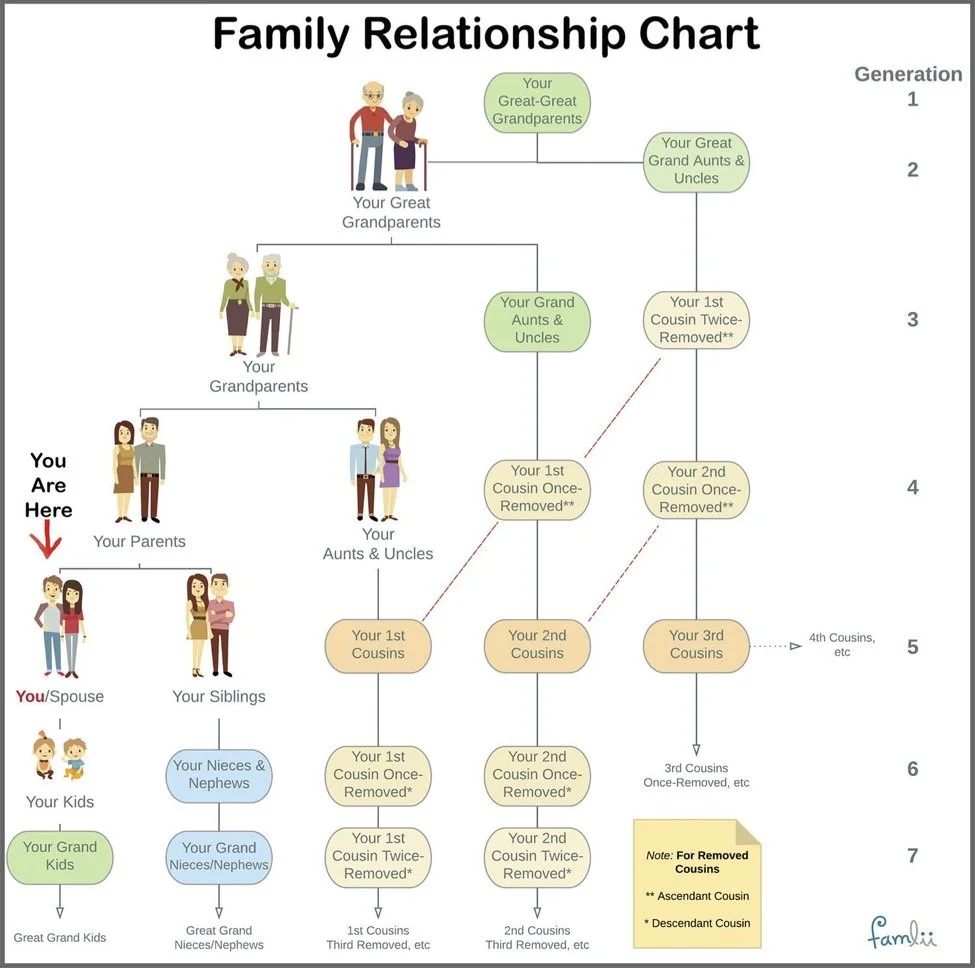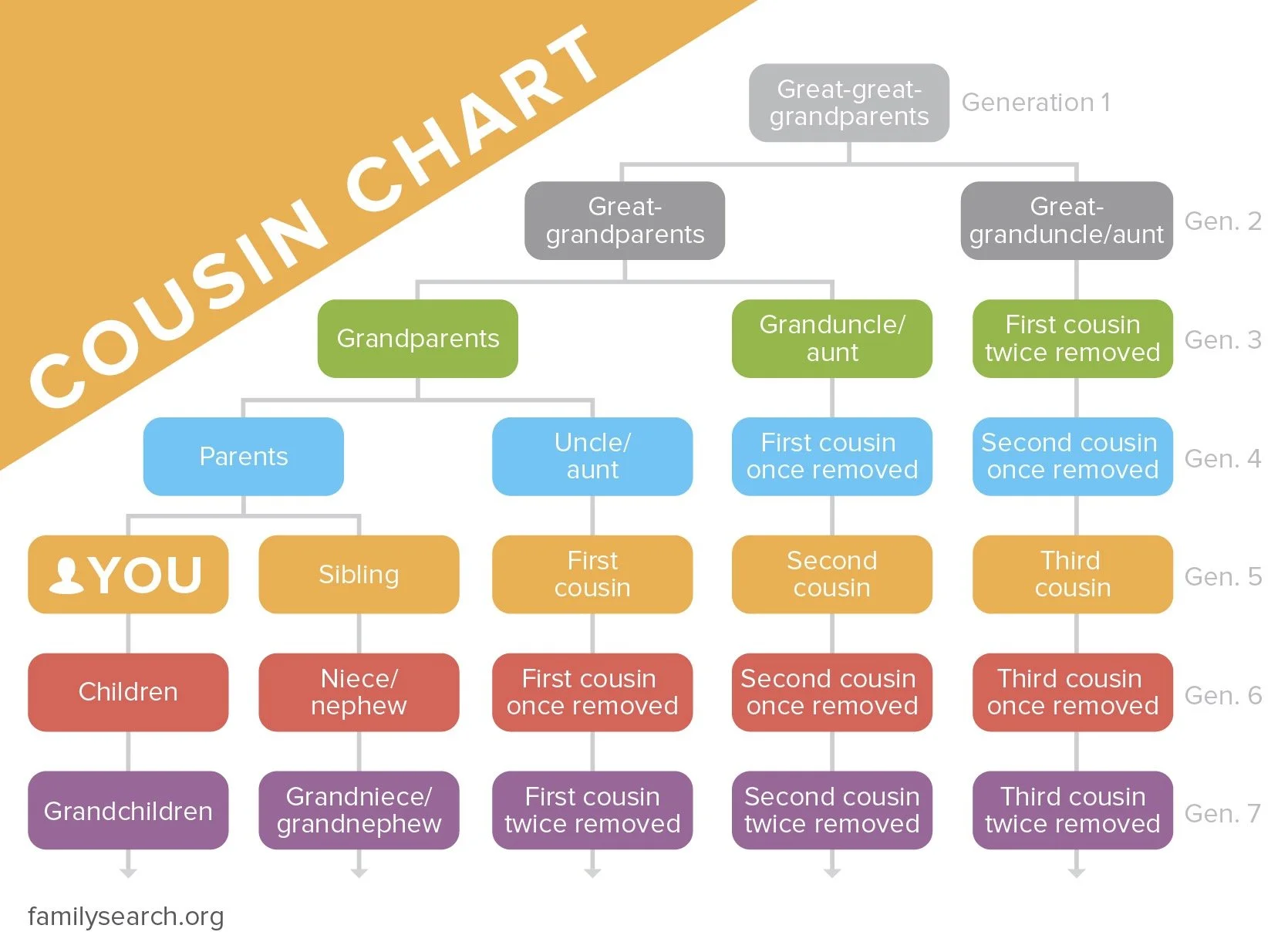Cousin Relationships
Everyone has a cousin, or two, or dozens! It’s easy to understand how we are related to our first cousins—they are the children of our aunts and uncles and we share a common set of grandparents. But when it comes to more distant cousin relationships, those family ties can become quite confusing.
How do you calculate cousins?
The following information will teach you how to calculate cousins. First, let’s look at cousin relationships within the same generation.
First Cousins (same generation)
You know that the children of your aunts and uncles are your first cousins and that together you share the same grandparents on either your father’s or mother’s side of your family tree. First cousins are in the same generation—if viewed in your family tree, these cousins will sit along the same row of the tree as you and your siblings.
Second cousins (share the same great-grandparents)
• Their grandparents are siblings,
• And their parents are first cousins.
• Second cousins will also sit in the same generational row as you, your siblings, and your first cousins—their branch will just be a little further away.
Third cousins share the same 2nd great-grandparents
• Their great-grandparents are siblings,
• Their grandparents are first cousins,
• And their parents are second cousins.
·
This pattern continues as you move into third, fourth and so on, cousin relationships.The relationships just keep moving back a generation, and the rows of cousins in the family tree move a little further away.
You can see that the cousin relationships between 1st, 2nd, 3rd cousins, and so on, are defined by sharing a set of ancestral grandparents in the same generation, as color-coded on the chart. Your fourth cousin’s 3rd great-grandparents are your 3rd great-grandparents too.
Different Generation (“Removed”)
Of course, your parents, grandparents, great-grandparents and so on, have cousins within their own generational rows too. That’s where the removed definition comes in. “Removed” simply indicates that this cousin relationship is separated by a certain number of generations.
Here are some examples:
• Your parents’ first cousins are your first cousins once removed. They are in your parents’ generation, which is one generation away from you.
• Your grandparents’ first cousins are your first cousins twice removed. They are in your grandparents’ generation, which is two generations away from you.
• Your great-grandparents’ first cousins are your first cousins 3x removed, and so on.
The removed relationship works both up and down the family tree.
• Your first cousins are your children’s first cousins once removed
• Your first cousins are your grandchildren’s first cousins twice removed.
• Additionally, your cousin’s children are your first cousins once removed, and your cousin’s grandchildren are your first cousins twice removed.
Adding an additional layer of complexity, the more distant cousin relationships can also be removed.
• Your great-grandparent’s second cousins are your second cousins 3x removed, as you are three generations away from those second cousins
• Your second cousins are also your great-grandchildren’s second cousins 3x removed, as they are three generations away from those second cousins.
More distant cousin relationships can quickly become confusing- and even professional genealogists sometimes have trouble calculating cousin relationships.
Other charts
• I have included four additional charts below that may help you understand cousin relationships. These were obtained from the following sources:
- Relationship Chart [FamilyTree Magazine, 2020]
- Family Tree Relationship Chart [GenealogyInTime Magazine]
- Family Relationships [ancestryProGenealogists]
- Cousin Chart [familysearch.org]
• Within this website, the family history is more focused on the last few generations. But these tools should help you determine cousin relationships, no matter how far “removed” they are.








